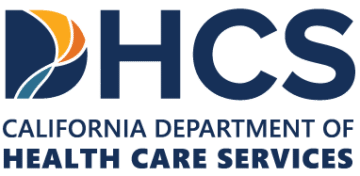

Long-term postpartum depression affects almost 5% of women with postpartum or peripartum depression. These symptoms can last for years after giving birth and present with various symptoms and severity.
This phenomenon occurs during or immediately after birth. It can leave many women wondering what causes it and the treatments available. Luckily, we have put together a complete guide on postpartum depression and how you can start recognizing the signs and symptoms.
You have likely heard of the term dubbed ‘baby blues’ but might have rarely ever associated it with an actual diagnosis of depression. Typically, depression is characterized by periods of feeling depressed that last at least two weeks.
Contrary to popular belief, there are many types of depression, such as:
Unfortunately, there are no definitive lab tests or imaging that diagnose depression consistently. Instead, your physician or a psychiatrist will assess your symptoms and make a diagnosis.
Depression can begin during pregnancy or up to one month after giving birth. A postpartum depression diagnosis goes far beyond baby blues and can affect approximately 15% of new mothers. In many instances, these women experience severe depressive symptoms that can last for weeks or months if left untreated.
On the contrary, baby blues are milder feelings of sadness and anxiety that disappear after a few days and don’t require medical treatment. Still, almost 80% of new mothers experience this feeling. Left untreated, it can develop into depression.
Research has shown that postpartum depression happens within the first six weeks after giving birth. Its onset is multidimensional, with many factors that can lead to its occurrence, such as:
Studies show that the hypothalamic-pituitary-adrenal (HPA) axis plays a critical role in women developing postpartum depression symptoms. The HPA axis increases hormones during pregnancy, which last for almost three months after giving birth!
One of the hormones that the HPA axis releases at times is cortisol, which is directly linked to stress and trauma. If your hormones are working on overload, you can imagine how you might feel depressive symptoms. Some may find this similar to feelings of depression in the past.
Another theory is the role that estrogen and progesterone play in depression. During pregnancy, these two hormones are significantly elevated. After giving birth, the body attempts to regulate them by sharply decreasing the supply.
While it returns to a normal level, the sudden hormone fluctuation can develop from simple baby blues to depression.
What are some of the signs you have postpartum depression? Psychiatrists use the Diagnostic and Statistical Manual of Mental Disorders (DSM-5). The major depressive episode should onset within four weeks after delivery.
Additionally, symptoms must be present for at least two weeks, and a patient should present with at least five of the following:
Depression is not all-encompassing, and many new mothers may also feel other symptoms. These include difficulty bonding with your baby, anger, or crying.
Some known risk factors place certain women more at risk for developing this mental health illness. Women who have a previous history of depression are more at risk.
Additionally, some other risk factors include:
Complicated pregnancies or emergent deliveries also put women more at risk. These traumatic events have shown an increased risk for developing depression. In current literature, some studies have tried identifying the highest risk factors for this type of depression.
After comprehensive reviews, the researchers discovered that prenatal depression and current abuse were the two leading causes. This study shows that preventive counseling and education can help health care providers identify women who are more at risk.
Ultimately, the goal would be to reduce postpartum depression. Techniques include counseling, therapy, and other treatment interventions. Additionally, more research is needed for health policy changes.
Updated questionnaires can help identify postpartum depression sooner.
Stigmas surrounding the symptoms of postpartum depression have made it challenging for many women. Most don’t want to alert a health professional or bring up past medical history. Reducing health disparity and acknowledging postpartum depression as a debilitating mental health illness is one step society can start taking.
Is there a difference between peripartum and postpartum depression? If you break down the word ‘peri,’ it means around or about.
Typically, the onset of peripartum depression differentiates it from postpartum depression. However, the two terms are often intertwined.
It can start during pregnancy and last for a few weeks after the pregnancy. Postpartum depression can last much longer. Beyond the timeframe, the symptoms and treatment are primarily the same for both types of depression.
Obsessive-compulsive disorder (OCD) is another mental health illness. Some may see it in women with postpartum depression. It also can stand alone as its diagnosis: postpartum OCD.
It differs slightly from depression and includes symptoms of:
One of the major signs of postpartum OCD is depression, and it is essential that you or a loved one can recognize the signs and symptoms. Typically, a qualified therapist or physician can help make an accurate diagnosis.
Treatment for postpartum OCD could include:
Many treatments for OCD and depression can overlap. Your therapist or physician can help recommend the best course of treatment.
One way to help reduce your chances of postpartum or peripartum depression is exercise. Simply adding in more activity can improve self-esteem and boost endorphins.
Endorphins are responsible for how you feel and view yourself and help alleviate some of your depressive feelings. Other simple strategies you can implement include:
For many patients dealing with depression, medication is one of the first stops that physicians take. In recent years, psychotherapy and holistic medicine have started gaining traction.
Antidepressant medications have been around for decades. They can help certain groups manage their depressive episodes. However, for breastfeeding women, your medication options may be more limited than others.
Additionally, common antidepressant medications are contraindicated during pregnancy, and if you suffer from peripartum depression, you can have symptoms begin before birth. However, selective serotonin reuptake inhibitors (SSRI) are some of the most popular antidepressants on the market.
They include brands such as Zoloft, Lexapro, and Prozac. Reviews and studies are primarily controversial surrounding SSRIs and breastfeeding, and in some cases, it can cause distress for the infant and mother. Before starting an antidepressant, be sure and check with your doctor on the risks versus benefits.
Some of the side effects with antidepressants include:
If oral medication isn’t effective, physicians may suggest IV therapy. Brexanolone is typically the drug of choice with IV therapy, and it is given over a few days.
Psychotherapy is a field of medicine that involves one-on-one or group therapy sessions. Many psychologists, psychiatrists, and mental health counselors use this technique for patients with mental health disorders.
Some of the techniques that psychotherapists use are:
CBT is one of the more popular techniques and involves a therapist addressing a patient’s negative thought processes and behaviors. It works at addressing the root of the problem for long-term, positive effects.
While it is commonly used for addiction, it also plays a role in mental health. Many individuals with a dual diagnosis can significantly benefit from individual or group CBT sessions. Like CBT, cognitive therapy solely addresses thought patterns to rewire our negative thoughts into positive ones.
Humanistic and psychoanalytic therapy are two older forms of therapy but have been adapted for modern-day approaches. Humanistic therapy helps patients identify their worth and maximize potential through self-actualization.
Psychoanalytic therapy emphasizes past thoughts and unconscious thoughts. Some people who have studied psychology may think of it as the ‘dream interpretation’ technique, but it includes much more.
Psychotherapy can benefit various mental health illnesses and feelings of grief, sadness, or stress. Some other positive benefits of attending therapy sessions include:
Current research shows that psychotherapy is beneficial for treating mental health disorders, such as anxiety, mood, and eating. It is also highly effective for patients suffering from grief or traumatic experiences.
Alternative medicine is also known as complementary medicine. It incorporates other techniques and methods outside of mainstream treatments.
Here are some examples of holistic treatments:
The benefit of alternative medicine is avoiding many of the side effects of medication and hospital treatments. Additionally, many holistic approaches have shown positive results. It can work for patients with addiction or mental health illnesses.
One form of holistic treatment that has gained traction during the past couple of years is self-care.
Unlike many misconceptions, self-care is not being selfish. Self-care is using techniques and strategies that help your physical and emotional health. The World Health Organization (WHO) has started acknowledging it.
The WHO claims it helps improve individual, familial, and community health. You can use it with or without a health provider’s guidance.
Health is much more than just physical, although that plays a prominent role. Some ways you can improve your physical health are:
However, research has dived further into this definition. Self-care includes looking inward and seeing how you are genuinely feeling and doing. This may include assessing your mental, emotional, and spiritual well-being. So – how can you get started with self-care?
First, find time each day to reflect on what your body needs. You may consider writing in a journal or picking one behavior each week that you can work on. As you work on these activities, pay attention to how you are feeling afterward.
Ultimately, the activity you pick should help reduce feelings of stress, anxiety, and depression.
Are you still unsure where you can start? Here are some simple self-care activities you can start with:
As you can see, most of these activities are simple and don’t cost anything. Self-care can be used with other therapy, medication, and medical treatment forms. It is a life-long process that can help you become more self-aware of your stressors and how you can help.
Postpartum and peripartum depression can be debilitating and cause lasting feelings of sadness, depression, and grief. Our postnatal depression test can help you get a headstart on addressing your symptoms.
Depression doesn’t have to last forever, and it shouldn’t keep you from enjoying time spent with your family, friends, and newborn. With many treatment options out there, the first step is identifying your symptoms and severity. Then, you can look at various therapies, medications, and holistic treatments.

Jamie Mantel is a Licensed Marriage and Family Therapist, with a Psy.D. in psychology. Jamie has worked for non-profits for over 20 years working with agencies, as well as her private practice in Huntington Beach, California.




















